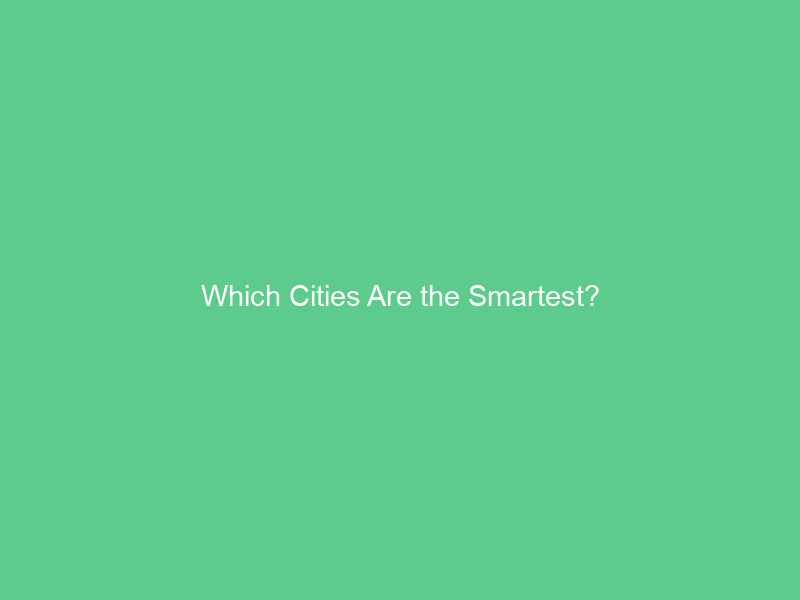Whoever you consult to answer this question of which cities are smartest may give different answers; one thing is certain however – cities around the globe are rapidly adopting technologies which enhance their intelligence.
Smart technologies are being implemented into every aspect of city living, from improving air quality and cutting traffic congestion, to offering faster public Wi-Fi connections and lower energy bills. But what exactly are their workings?
Mobility
Traffic congestion is a significant challenge. According to US consulting firm INRIX, Americans spend 51 hours annually driving; which can be expensive for drivers and put an unnecessary strain on local governments who must maintain roads while dealing with financial losses due to road accidents.
Smart cities use technology to reduce traffic congestion and air pollution while providing sustainable mobility solutions for their citizens. Examples include integrated ticketing that allows citizens to pay for public transportation via one app, or intelligent traffic management systems that prioritize vehicles with lower emissions or energy consumption.
Smart City solutions must be inclusive for all citizens to access them; this can be achieved via open data portals and mobile apps that provide residents with the information needed to make educated choices. Inclusion also means making sure smart technologies do not create barriers for those who might not know how to use them or cannot afford devices necessary for using them effectively.
Energy
Smart cities require high-quality and dependable energy supplies in order to support digital transformation initiatives and the safety of citizens. Energy storage systems (ESS) play an integral role in providing smart cities with energy at times of low demand – so when demand spikes again they can store electricity before releasing it when demand rises again.
Cities across the United States have already implemented ESS technology to enhance traffic management and reduce costly power generation projects. Other smart city technologies include streetlights that turn off automatically when not required and internet-enabled bins for waste collection. As more sensors connect to the Internet, the future of smart cities looks bright. Cities will need to adopt a comprehensive digital strategy if they hope to maximize their potential and unlock all its benefits, and involve citizens in the planning process and promote inclusive community engagement in order to fully realize their potential. Doing this will foster trust while guaranteeing all residents can take advantage of new technologies.
Environment
Smart cities leverage smart technologies to monitor environmental factors like air quality, water usage, waste disposal and renewable energy production – using this data to reduce emissions, save money and enhance residents’ health.
Smart city’s ability to achieve environmental goals relies on more than technology and data alone; nature must also be integrated into urban environments in order to provide mutual benefits between humans and ecosystems.
Smart traffic systems that optimize road usage and public transport schedules, predictive parking management that reduces cars on the streets searching for spaces, renewable energy infrastructure to cut electricity consumption and IoT-based monitoring methods that detect pollution sources may make cities less polluted. IoT monitoring methods also encourage citizens to modify their behavior to reduce pollution levels produced.
For smart cities to be environmentally sustainable, they must include citizen engagement strategies that foster trust and foster inclusive development. Furthermore, eco-friendly practices should be supported such as energy-saving technologies or recycling electronic waste.
Security
Smart cities enable public safety agencies to use data-driven insights from sensors such as cameras, telematics platforms and security platforms that provide real-time information to prevent crimes and improve crisis awareness events. Public safety officials use this real-time intelligence for faster response.
Smart cities collect vast quantities of data, creating opportunities for urban planning and governance; however, their effect on security and crime reduction remains poorly understood.
Privacy remains a primary concern when it comes to smart cities, where data collection technologies use personal identifying information for data mining purposes that could potentially be exploited by cyber attackers.
S4AllCities has developed software enhancements to address this challenge by filtering data to detect specific behavior patterns, like sprinting through crowds or unusually long pauses during interactions, which trigger automated alerts to security personnel and help reduce human error. Furthermore, mutual authentication–where devices authenticate each other before sharing data–can detect tampering or any potential unauthorized access, particularly important when sensitive information such as shooter detection is shared across multiple services.

